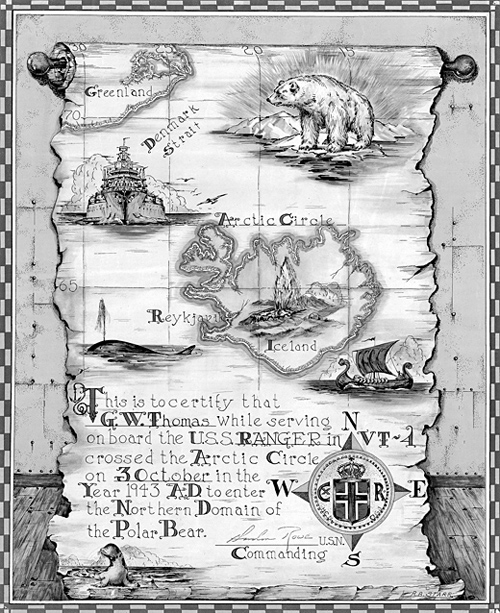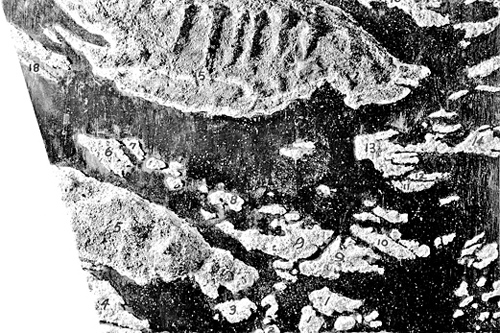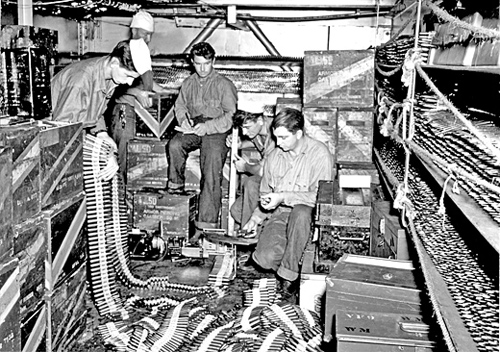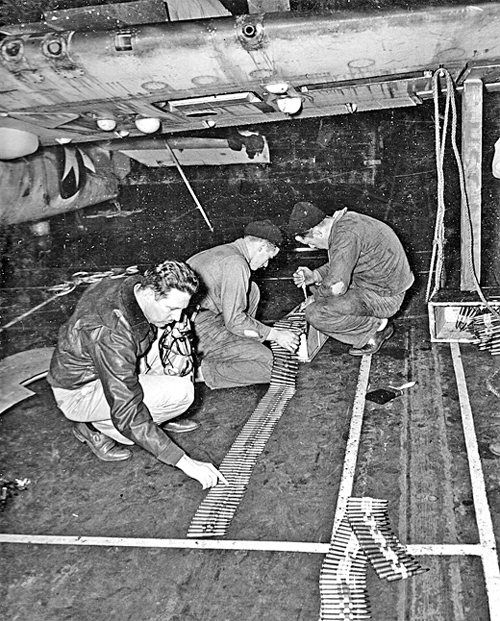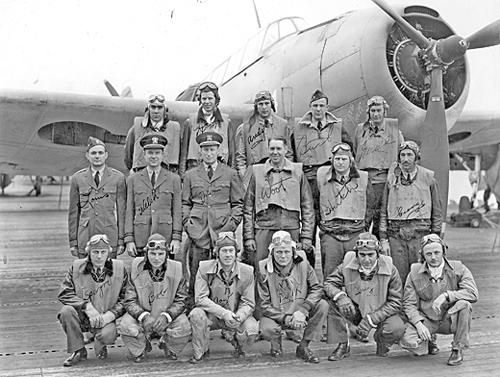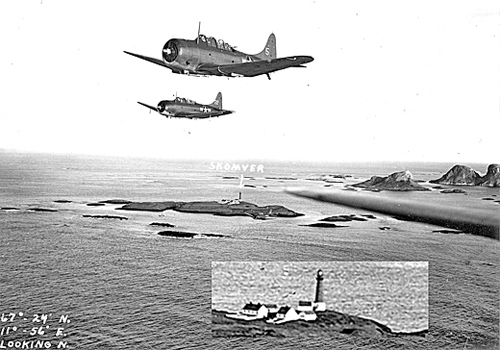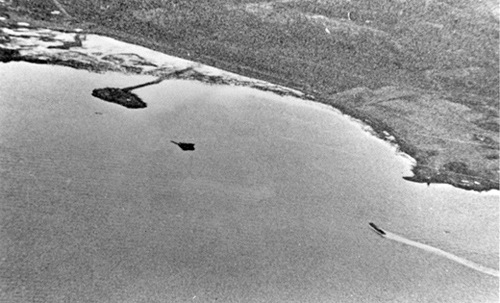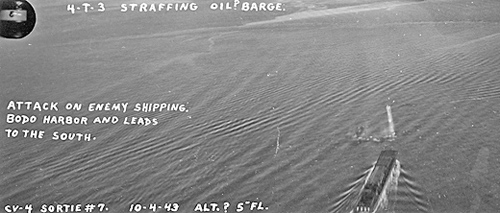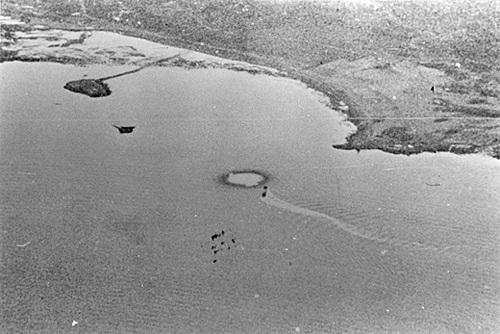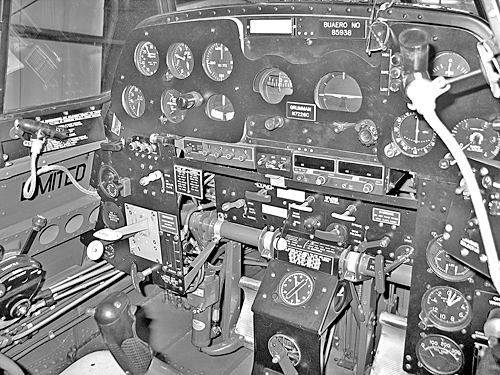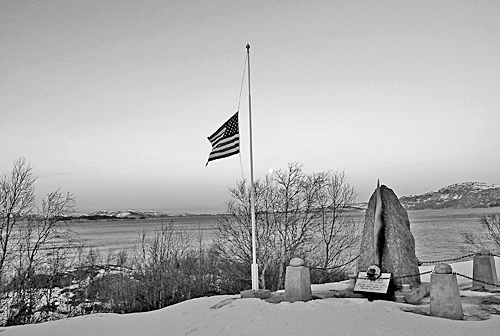|
|
||||||||||||||||||||||||
 |
||||||||||||||||||||||||
|
|
||||||||||||||||||||||||
|
||||||||||||||||||||||||
|
|
||||||||||||||||||||||||
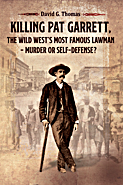 |
||||||||||||||||||||||||
 |
||||||||||||||||||||||||
 |
||||||||||||||||||||||||
|
|
||||||||||||||||||||||||
|
|
|
Chapter 1 - Operation Leader: Initiation Over |
|
By Gerald W. Thomas, VT-4 |
|
"Tracers circled the cockpit and my engine took a direct hit." The first US carrier-based attack on Nazi-held Norway during World War II was assigned the code name OPERATION LEADER and was carried out by aircraft from the USS RANGER, on October 4, 1943. Prior to this operation, German news releases stated that the RANGER had been torpedoed and sunk by a German submarine. The captain of the sub (U-404), Lt Otto Von Bulow, who had been decorated by Hitler with Oak Leaves to the Knight's Cross, was credited with this kill. Thus, the Norway strike was an embarrassment to both Hitler and Von Bulow. At the time of the Norway strike, the RANGER was operating as a part of the British Home Fleet under the overall command of Admiral Sir Bruce Fraser. In addition to the Admiral's flagship, HMS DUKE OF YORK, the command consisted of the HMS ANSON, three British cruisers, six British destroyers, a US contingent of several destroyers supporting the cruiser USS TUSCALOOSA, and the USS RANGER. Rear Admiral Hustvedt was in command of the RANGER Task Force. A Pilot's View The boatswain's whistle shrieked through the loud speaker in the passageway. The announcement came: Now hear this! Now hear this! The RANGER has just crossed the Arctic Circle. The captain congratulates all those on board for attaining membership in the Bluenose Society. With Neptune's permission and the blessings of Aurora Borealis, Bluenose certificates will be issued to all hands. It was the evening of October 3, 1943, and the RANGER had just crossed the Arctic Circle. We had completed a busy day of inspecting planes, loading bombs, and studying maps. A big engagement against the Nazis lay ahead. Everything was in readiness for a predawn takeoff. All pilots could draw from memory a rough sketch of the coastline and adjacent islands of Norway from Sandnessjoen to the Bodø airport. A description of the fjords and mountains had been furnished by former members of the Royal Norwegian Air Force. Pictures of German ships that might be encountered were examined, and pinpoints on the map indicated the gun emplacements that were established before the German occupation. Rough seas on the North Atlantic always made me seasick. That night aboard the RANGER was no exception. I was unable to eat supper, so I climbed into my bunk early with a bad headache. I felt better lying down. Even though it was bitter cold outside, it was too warm in the Officers' Quarters. It was always warm and stuffy, with bad odors everywhere, when the sea was rough. Cigarette smoke was especially bad. Fortunately my bunk was against an outside steel bulkhead that was cool from contact with the water. I often turned aside the covers and rolled against the cold steel. It made me feel better. My stomach settled and I finally fell asleep -- perhaps about midnight. I slept fitfully and tried not to think about the briefing the previous afternoon -- or the prospect of tomorrow. Reveille was sounded about 2 a.m. It was hard to get up! I was still groggy, sick, and uneasy. I put on heavy clothes including my green wool Red Cross sweater. The word had spread among the pilots that these hand-knit sweaters, donated by the Red Cross, were flak-proof. It couldn't hurt to have extra protection from both flak and the Arctic cold.. |
|
|
At 0430, "Flight Quarters" was sounded and pilots and crew lay up to their respective Ready Rooms. Preliminary flight instructions were already coming over the teletype, and there was a feeling of anxiety in the air as most of us faced our first mission over enemy territory. Will Souza, Bob Ruth, and I were all new ensigns in Torpedo Squadron 4. A couple of months earlier we had been enjoying "good duty" as test pilots for CASU-22 (Carrier Aircraft Service Unit 22) at Quonset Point, Rhode Island. The three of us had been together through most of flight training at Corpus Christi, Texas, and dive-bomber training at Opa Locka, Florida. We were not trained as torpedo pilots, although we were carrier-qualified. I had completed my 8 required qualification landings aboard the British carrier HMS ATTACKER off Norfolk, Virginia. On the final qualification landing, as my SNJ trainer hit the flight deck, the tail hook caught a tie-down iron instead of a cable because the wooden flight deck was worn down to expose the iron strips. The tail hook snapped off, and I crashed forward into the barrier. I walked away from the damaged plane, and the landing counted toward the necessary 8 required for carrier qualification. My reflections on this incident were interrupted when our Squadron Commander, D. W. "Woot" Taylor, took charge of the briefing. It went something like this: We are to launch planes from 100 miles out to sea. Our target is German shipping and shore installations in the vicinity of Bodø, Norway. The dive-bombers will hit the Port of Bodø almost due east of the launch site. The torpedo planes will attack shipping along the fjords south of Bodø. Fighter cover will be split, part for the dive-bombers, part for us. All torpedo planes are loaded with four 500-pound bombs with armor-piercing, 10-second-delay fuses. Stay close, follow the signals. Since only CRAG (Commander Ranger Air Group) and the VT-4 skippers have planes equipped with VHF (Very High Frequency), we will all maintain radio silence. Do not use your radios! We must not reveal the location of the task force or the nature of our mission! We will operate in two-plane sections. When we spot a ship, the leader of the two-plane section will wobble his wings violently. This maneuver will be spotted by the fighters flying overhead. Four fighter planes will then split off and dive to strafe the ship -- hopefully reducing AA fire. The first two torpedo planes will follow the strafing fighters and drop their bombs at masthead level on the ship. Only two TBFs will go down at a time. When we spot the next ship, the next two torpedo planes will follow the same procedure -- four fighters will strafe, two torpedo planes will go in for masthead bombing runs. Is that clear? Stay close in formation! Follow the signals! Do not break radio silence! Torpedo Squadron 4 consisted of 14 pilots, about 35 crewmen, but only 9 Grumman Avengers (TBFs). A tenth TBF on board was assigned to Cdr Joseph A. Ruddy, which meant that five VT-4 pilots with crews would not fly. Homer H. Hutcheson, the Exec, knew I was seasick, so he originally assigned Ensign Souza to the flight. However, at the last minute he told me to pilot Four-Tare-Nine (4-T-9), the last plane on the flight deck. |
|
|
I hurriedly copied the Point Option Data (ship's location, speed, wind direction, velocity, etc.) on my plotting board and strapped on my parachute harness. The parachute straps did not fit very well over the .38 shoulder holster -- I was sure I would break a rib if I bailed out. I took the gun off, put it back on, took it off again, and finally decided to leave it in the Ready Room. I wouldn't be likely to use it anyway if I went down in occupied territory. At 0618, the northern attack group and a small combat air patrol were launched. The attack group consisted of 20 Dauntless dive-bombers, escorted by 8 Wildcat fighters, with Lt Cdr George O. Klinsmann as the leader in one of the SBDs. This group was sent toward Bodø. As the last SBD cleared the flight deck, plane handlers spotted the deck with the TBFs and fighter escort planes. "Pilots, man your planes." The orders came over the squawk box to man our planes before I could recalculate the ship's position or do any more sophisticated navigation. As pilots and crew rushed up to the flight deck in the dark, a below-freezing wind blew across the deck and helped relieve my nausea. I found Four-Tare-Nine near the fantail on the flight deck. I climbed onto the wing of the huge Avenger, and the plane captain helped me fasten my seat-pack chute, safety belt, and shoulder straps. He produced the yellow sheet, which I signed, and we went over the ordinance data. "Check your wheel chocks, propeller clearance, and all loose gear about the decks. Stand by to start engines!" "Stand clear of propellers!" The loudspeaker broke the predawn silence as the expectant pilots checked switches, the gas mixture, and went through the check-off list. With the word to "Start engines," all engines turned over simultaneously. With the exception of a couple of cold, balky engines, the flight deck suddenly came alive. I admired the plane handlers who stood among the tightly packed planes and were able to guide them into launch position without getting chopped up by a propeller. I taxied into the takeoff spot, received the rev-up signal, and checked out all instruments. The engine sounded good; so I nodded my head to the launching officer, and he dropped his flag directing the takeoff. I popped the flaps about halfway down the flight deck and took off into the semidarkness of the North Atlantic. As I raised the wheels, I made the usual right turn to clear my slipstream from the flight path of the next plane. With all 9 torpedo planes now in formation, we turned toward the coast of Norway -- German territory! As I settled down for the 100-mile flight to Norway, I wondered how in the world a country boy from Idaho had gotten into this kind of situation! My obsession with flying started when I was 14. The bay mare picked up her ears. Almost immediately, the horse on the right followed suit. The team heard something above the sound of the wagon wheels crunching on the rocky road leading to the abandoned dry farm. My Dad was driving the wagon, and I was in the seat beside him. I looked to see if the horses had spotted something on the open range -- perhaps an antelope or a herd of horses. I scanned the rolling sagebrush-covered hills that we called the Medicine Lodge Bench. Only a few seconds after the horses picked up their ears, Dad and I heard the sound. "By golly, it's one of those flying machines!" my Dad said. "Probably a barnstormer from Butte or Pocatello." It was the first real airplane either of us had ever seen. The horses became very excited as the plane flew by. But the team was not nearly as excited as I was! What a thrill to see a real airplane out here in Southern Idaho! Dad and I talked a lot about the flying machine as we rolled up barbed wire from the abandoned dry farm and headed home. I resolved then and there to someday take a ride in an airplane and maybe even learn to fly. It didn't seem too likely with all the problems we had out here on the ranch during the Depression. The year was 1933. But this was no time to dream about the past. Our Torpedo 4 southern attack group made landfall between Sandnessjoen and Kunna Head just as dawn was breaking. The rugged mountains along the coast were covered with snow, and no German fighters had flown out to intercept us. The attack was indeed a surprise. |
|
|
The skipper turned the formation north to follow the shipping lanes along the coast. About this time, the Germans were alerted and scattered AA fire developed. In a few minutes we spotted our first large enemy ship -- a transport. Taylor wobbled his wings, the fighters went in to strafe, and the first two torpedo planes made a masthead run on the ship. After the attack, the two torpedo planes rejoined our group where we were now flying at about 1500-2000 feet. The AA fire intensified as we continued our flight toward Bodø. Suddenly, the Avenger flown by Lt(jg) John Palmer exploded just in front of me and started a gradual spiral toward the sea. The skipper broke radio silence and told the plane crew to bail out, but only one parachute popped into sight before the plane plunged into the sea. I drew myself into the center of my own cockpit under the protection of the armor plate, making myself as small as possible as the bursts of AA fire spotted the sky. We continued the flight down the fjords. A few minutes later a second strike group attacked another ship. Another successful run and the ship was left burning. Then, before it was our turn, I suddenly realized that Lt(jg) Trexler, my section leader, was wobbling his wings. He must have received a hand signal, which meant that our attack section was next. I had been watching a tanker-like ship chugging down the shipping lanes just ahead of us (the American records identify this ship as MFS 231, a oil tanker, but German records show the ship was a freight barge carrying 40 tons of ammunition.) By the time Trex gave the signal to attack, we were almost directly over the ship -- still at about 1500 feet. That meant more of a dive-bombing run than a glide-bombing run as planned. Trex turned his plane sharply into a dive. I had been lagging too far behind in formation, so I knew I would reach the ship just in time to get in Trex's bomb blast -- remembering the 5-second delay fuse. Consequently, I rolled the plane violently to shortcut the distance down and pushed into the dive. As I rolled, my right wing blocked my view of Trex's plane. In the dive, I realized that he wasn't in front of me. I learned later that he had pulled out of the dive for two reasons: first, the fighter planes flying above didn't get the signal in time to strafe; second, the dive was too steep for a torpedo plane. |
|
|
|
As I put more and more pressure on the stick to hold down the nose of the huge Avenger, I rapidly went through the switching procedure to arm the bombs, open the bomb bay, and turn the guns on for strafing. I didn't have time to roll the tabs forward to reduce the pressure on the stick. I fired a couple of bursts from the machine guns, pushed the "pickle," and dropped two 500-pounders. It was a tight pull to get out of the dive just above water level. Because of the steep dive, I could not hold the nose on target, so the two bombs straddled the bow of the ship -- at least 50 feet too far forward splashing water on the deck of the tanker. My belly gunner, Jackson, who also served as bombardier, called on the intercom to tell me that we had a clean miss, but two bombs were left in the bomb bay. At that point, I threw caution to the wind. I guess I almost forgot that I was in combat -- rather, I automatically followed the pattern of a practice mission. I was flying about 50 feet above the water, moving rapidly toward a small, rocky island that outlined the seaward boundary of the shipping lanes. As I pulled the plane into a steep wingover and passed over one of the islands, someone shouted over the radio, "Watch that shore battery!" I didn't realize that I had turned just above a gun emplacement or that my wings were perforated with bullet holes. Anyway, I turned back for a masthead run on the German tanker which was now headed toward the shore where I could quarter its wake -- an ideal attack position. |
|
|
|
As I approached the ship, I became conscious of -- almost surprised to see -- tracers floating toward me from about three locations on the tanker. And I was moving so darned slow -- even at full throttle! I didn't have the time or the presence of mind to strafe on this second approach. As I got closer and closer to the tanker, all the ship's gunners stopped firing except one. The tracers that flashed by made a complete circle of the cockpit. Then, just before I pushed the bomb release over the ship, my engine took a direct hit. There was a small explosion with a brief flash of fire and smoke over the cockpit as I pushed the pickle releasing the two remaining bombs. One 500-pounder landed on the deck of the tanker. The ship exploded and ran aground as it burned. Garner, my turret gunner, shouted, "We're on fire!" I hauled back on the stick to gain altitude, then picked up the mike and shouted over the intercom, "Bail Out!" At about 800 feet, I opened the hatch, sprung my safety belt, and started to climb out of the cockpit. I had never bailed out of a plane before and in the confusion forgot to pull the radio cord from my helmet. Consequently, I heard a call from Garner. "Don't jump, don't jump. Jackson's popped his chute in the plane and he can't get out!" It seems that Jackson, in his excitement, had accidentally pulled his ripcord inside the belly of the TBF. The spring-loaded silk had let loose all over the place. He tried several times to bundle the slippery silk in his arms and work his way through the narrow door, but no such luck -- he was trapped. |
|
|
As I settled back into the cockpit, I picked up the mike and gave instructions to Jackson and Garner to fasten their safety belts and prepare for a crash landing. Our plane was still over the shipping lanes -- not far from the burning tanker. The engine was smoking but there was no active fire. There was no way I could land on that rough, rocky shore of Norway, so I chose to make a water landing. I started letting down toward one of the small islands to make a wheels-up, full-stall water landing. About then I realized that I was the lone target of concentrated AA fire. It got hotter as I lost altitude. I began to think I would never make it all the way down, so I shoved the throttle forward and headed toward the open sea, taking some violent evasive action to shake the gunners off my tail. It was a miracle that I wasn't hit again. At about two miles out I started climbing to gain altitude. The plane was still laying down a stream of smoke. I checked the cockpit instruments expecting to see several red warning lights, but there were none. Oil pressure, OK; cylinder head temperature, OK; tachometer and throttle, working. I was carrying about 30 inches of mercury -- what a relief! Now, to do some quick planning. The RANGER was 100 miles out in a sea that was rough and cold. We were told at the briefing that we could expect to live about 15-20 minutes in the icy North Atlantic -- an hour at the most. The distance to neutral Sweden was only 90 miles. Scuttlebutt was that there was good duty in neutral Sweden for Americans. Ten miles may make the difference in a damaged plane, so I called the crew and said that we would head for Sweden. I watched the instruments carefully as I climbed to 3000, then 5000 feet. Turning toward shore, I looked at the snow-covered mountain range that characterized Norway -- not a pleasant sight for a pilot with a damaged plane. As we flew toward the shoreline, another hazard developed. All my fellow squadron buddies had left the area and flown toward Bodø. I was alone. Every Nazi AA gun on shore started shooting at us -- it became mighty uncomfortable! OK, forget Sweden -- I'll head for the carrier! I turned back toward the sea. Instruments still OK -- I cut back on the throttle. I must save the engine, if possible. I pulled the plotting board out of the instrument panel into my lap and suddenly realized that I didn't know precisely where the carrier was located. What heading should I take to find the RANGER? I looked around to check for other planes and saw an Avenger to the south. I headed toward it, but it pulled away. Later I found out that the pilot thought I might be a German Focke-Wulf, so he wasn't about to be approached. I decided to guess at a heading and hope for the best because I was restricted to dead reckoning without precise Point Option data. That was a sure formula for disaster. A few minutes later I spotted several torpedo planes and joined them in formation. By now, radio silence had been broken by various distress calls, but I still didn't use the mike. I signaled to one of the pilots and pointed to my engine. He flew around old Four-Tare-Nine and gave me the thumbs up signal, while I wondered how that engine could still run and continue to smoke. I concentrated on the rest of the 100-mile flight over the cold North Atlantic, watching the instruments carefully and listening for the first change in the sound of the engine. The canopy around the cockpit was now almost completely covered with oil, so I opened the hatch and reached my left hand into the wind stream to wipe away some of the oil. I succeeded only in smearing the oil around and almost broke my arm from the force of the wind. The open hatch gave me some increased visibility, but the cold air made me shiver. The RANGER, alerted to the approach of returning planes, had started turning into the wind when I spotted the task force from about 15 miles out. Breaking away from the other planes, I headed straight for the RANGER. I dropped the wheels and tail hook and opened the flaps. Red lights appeared on the instrument panel indicating that my oil pressure was about gone, but the hydraulic system seemed to be functioning. "Hell, I know I'll never make it around again!" I just barely missed a destroyer as I wrapped the plane into a tight turn and started back toward the carrier. There was no possibility of following the signal officer's hand directions through the oil-covered canopy. However, I had some visibility out the right side of the cockpit, so I placed the island of the ship about where I thought it should be to line up with the flight deck. I chopped the throttle, pulled the stick into my lap to stall the plane, and hoped for the best. Luckily, my tail hook caught a wire just as I hit the barrier. My right wing also hit the ship's island. As the plane crashed, I released my safety harness and jumped out onto the wing. Plane handlers were spraying the smoking plane as I slid off the wing and ran forward on the fight deck. My crew, Garner and Jackson, escaped at the same time. As I ran toward the hatch that led to the Ready Room, the flight deck officer stepped quickly in my path, grabbed me by the neck, and shouted, "You son of a bitch! You landed on a wave-off and fouled up the flight deck. Now, how in hell am I going to get the other planes aboard?" I shook the air officer's hand loose from my flight suit and went on down to the Ready Room knowing I might face a court martial. To land on a wave-off was a major offense. A few minutes later we were informed that the flight deck was cleared, and other returning planes were landing. They took my plane, Four Tare Nine, down the elevator for an engine change and wing repairs. I told my story, but no one gave me any assurance that I would not receive a reprimand. |
|
|
Sometime later (November 22), the RANGER raised anchor in Scapa Flow and returned home. Our squadron flew ashore for a short training period before transferring to the USS BUNKER HILL in the Pacific. One day Ensign Makibbin and I went by the cleaners on the Navy base at Quonset Point to pick up our uniforms. I noticed a surprised look on the face of the young woman at the counter when I gave her my name. As she brought my uniform, she asked if I was the Ensign Thomas of Torpedo Four. When I said yes, she introduced herself as Mrs. Jackson and said, "My husband thinks you are the best pilot in the Navy!" I never saw Mrs. Jackson again, but her husband flew with me until June of 1944. He was a loyal and dedicated crewman. Mrs. Jackson's statement made me feel good, but for some time I carried the guilt of "fouling up the flight deck." I have the Skipper to thank for helping me tell my story and later recommending the Air Medal. Part of the citation read: "…Although his plane was struck several times in the engine, he left the enemy beached and badly down by the stern before setting out on a precarious return flight to his carrier with failing power, an oil-covered windscreen, and a damaged wing." The crash landing on the RANGER after the Norway strike with 3.2 harrowing hours in the air was recorded in my official pilot's log as Carrier Landing Number 13. I was now, at least in some circles, a "veteran Navy pilot." My initiation into Torpedo 4 was over. |
|
|
Air Group 4 - "Casablanca to Tokyo" |
|||
|
|
|||
